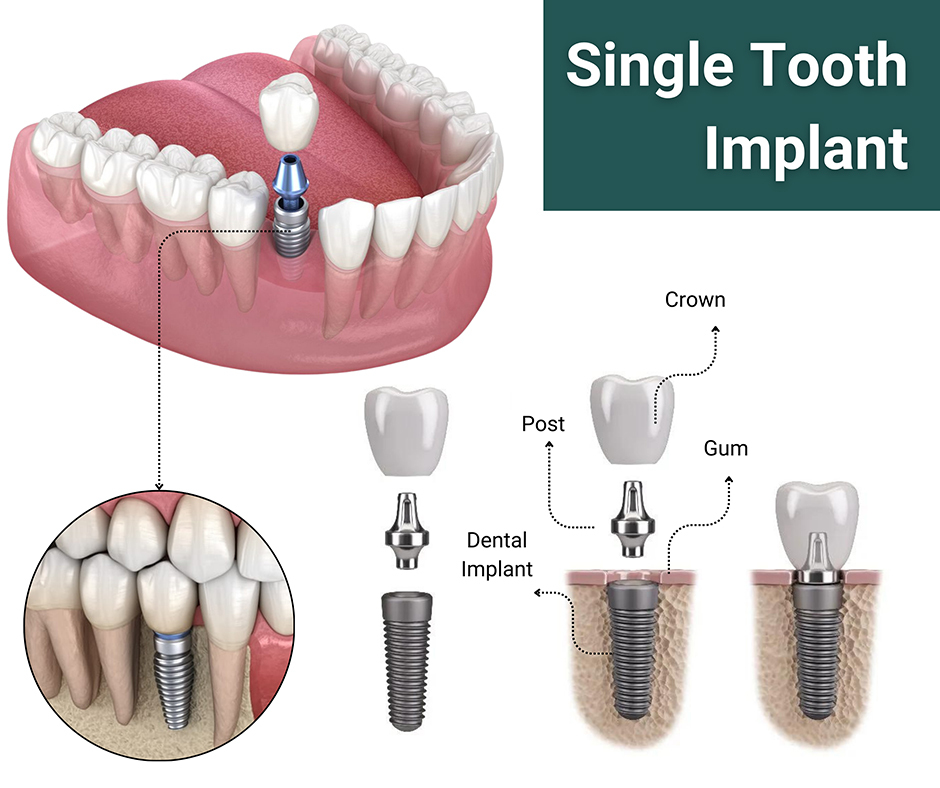Little Known Facts About Dental Implants.
Table of ContentsNot known Facts About Dental ImplantsEverything about Dental Implants3 Simple Techniques For Dental ImplantsThe smart Trick of Dental Implants That Nobody is Talking About
are clinical tools surgically dental implanted into the jaw to recover an individual's capacity to chew or their look. They give support for man-made (fake) teeth, such as crowns, bridges, or dentures. When a tooth is lost as a result of injury or illness, an individual can experience problems such as fast bone loss, defective speech, or modifications to chewing patterns that result in pain.
Framework of The Oral Implant System picking oral implants, talk with your oral provider concerning the possible advantages and threats, and whether you are a prospect for the treatment. Points to take into consideration: Your general wellness is an essential factor in figuring out whether you are a great candidate for oral implants, for how long it will certainly take to recover, and for how long the implant might stay in place.
Cigarette smoking may influence the recovery process and lower the long-lasting success of the implant. The recovery procedure for the dental implant body may take numerous months or longer, during which time you usually have a short-term abutment instead of the tooth. the dental implant procedure: Meticulously comply with the oral health directions provided to you by your dental provider.
More About Dental Implants
Implant failure can lead to the need for one more operation to deal with or change the dental implant system. Restores the capability to eat Recovers cosmetic appearance Assists keep the jawbone from diminishing because of bone loss Maintains the health and wellness of the bordering bone and gum tissues Assists keep adjacent (neighboring) teeth stable Enhances lifestyle Damages to surrounding all-natural teeth throughout dental implant positioning Injury to the surrounding cells throughout surgical treatment, such as sinus opening Injury throughout surgical procedure (as an example, fracture of surrounding jawbone) Insufficient feature, such as feeling like the teeth do not bite together normally A feeling that the tooth hangs or turning in place resulting from an abutment screw loosening Implant body failing (looseness of the implant body) because of systemic infection, which may be most likely in patients with unchecked diabetics issues due to local infection in bone and gums supporting the implant body as a result of postponed healing, which might be more probable in clients that smoke Problem cleansing the periodontals around the dental implant, leading to bad dental health Neglected gum disease Post-surgical tingling as a result of nerve impingement or damages Always inform wellness care providers and imaging specialists that you have oral implants prior to any magnetic resonance imaging (MRI) or x-ray treatments.
FDA is not familiar with any kind of adverse events reported for MRI or x-ray treatments with dental implants. Dental implants systems are usually constructed from products that adhere to global agreement standards of the International Company for Standardization (ISO) or ASTM International. These standards have information of what makes a secure material.
Various find here other products such as gold alloys, cobalt-based alloys, titanium alloys, or ceramic products are often made use of. The security accounts of these products are well-known. Oral implant systems are assessed according to international consensus standards. Biocompatibility testing, to show that physical contact with the device does not create difficulties like irritability or allergy, is part of the assessment that helps make certain the products in the oral implant system are risk-free and do not cause negative results when implanted in people.

4 Simple Techniques For Dental Implants
Some people are not qualified for dental implant surgical treatment. It is for oral cosmetic surgeons to operate individuals with: intense illnessuncontrollable metabolic diseasebone or soft cells disease or infectionIf these problems are fixed, an individual can have the surgical procedure. Dental Implants. In, dental specialists avoid from running on people with: If people with any one of the above go through oral implant surgical procedure, there is a greater threat of the implant stopping working
Some people have a jawbone abnormality that stops enough bone for an implant from establishing. The surgeon will certainly after that utilize a bone or bone replacement to repair and construct up the area.
Oral implant surgery is a tailored process. It's not the same for everybody. The following provides a general summary of what you can expect your dental expert, oral surgeon, periodontist or prosthodontist to do: Put the dental implant operatively. Give you time to heal. Attach the message and final crown, bridge or denture.
Next off, your specialist will very carefully place the dental implant right into your jaw. If your implant is near the front of your mouth, your dental expert will make a temporary tooth for you to put on until you heal.
Everything about Dental Implants
Your copyright can inform you what to expect in your scenario. Throughout the healing phase, your jawbone should fuse to the oral implant. This process, called osseointegration, is crucial for stability and long-term success. This procedure can take anywhere from three to 9 months. In some situations, it might take longer.
Once your dental implant heals, your dental professional can attach the joint (small connector visit this website article) and your final restoration (crown, bridge or denture). This generally takes regarding one hour to finish and might require a 2nd minor surgical procedure. You should not really feel any kind of discomfort during your dental implant procedure since your copyright will certainly utilize medication to numb your gum tissues.